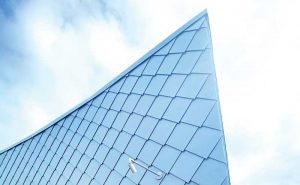
By Charles “Chip” McGowan
Evaluating materials and products to meet projects’ performance requirements and code compliance is an ongoing task for specification professionals. Supporting modern construction goals, sustainable attributes, and outcomes are now part of this evaluation and specification process. Today, owners and designers are increasingly asking specifiers to examine the carbon footprint for each choice and their collective effect.
For roofing and wall cladding products, architectural zinc’s inherent metallic properties can help reduce the embodied carbon footprint for residential and commercial buildings, and improve their energy-efficient, climate-resilient, long-lasting performance.
Carbon concerns, climate change, and construction
When global, national, and local governments, and other authorities having jurisdiction (AHJ) discuss reducing their carbon footprint, the inference is to reduce the effects of climate change due to the generation of greenhouse gases (GHGs) from various sources, including commercial and residential construction.
To fathom the importance of lowering construction’s carbon footprint one must grasp the extant of carbon concerns and climate change.
Carbon emissions, specifically emissions of carbon dioxide (CO2), are identified as GHGs. In conversations, the terms carbon emissions and GHG emissions are often interchangeable. In application, GHG emissions are typically measured in terms of “carbon equivalent” (CO2eq) and global warming potential (GWP). A 100-year GWP is standard, which represents the energy absorbed by a CO2eq GHG over 100 years.




